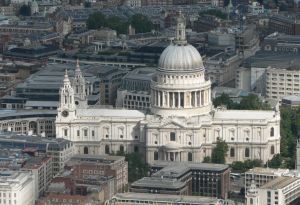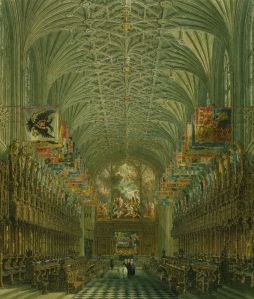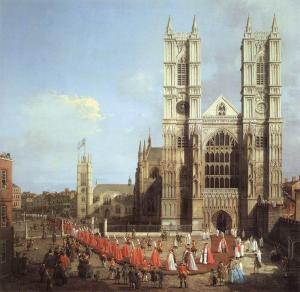For me, the musical highlight of the wedding between Prince William and Kate Middleton, was Paul Mealor’s setting of ‘Ubi caritas’. So it is a great delight to have the opportunity of singing it at the Southport Bach Choir’s concert on Saturday, 20 April, which will be given at the historic parish church of St Helen’s in Sefton Village.
The words couldn’t be simpler and are beautifully appropriate to a wedding:
Where charity and love are, God is there.
Christ’s love has gathered us into one.
Let us rejoice and be pleased in Him.
Let us fear, and let us love the living God.
And may we love each other with a sincere heart.
[They are, as it happens, the first verse of the antiphon that was traditionally sung during the washing of feet on Maundy Thursday.]
Mealor’s music is both lush and astringent. The 4-part choir divides into as many as 9 parts at times and this produces a thick texture, which is enriched with some glorious dissonance. By contrast, the opening and closing sections are sparer, giving prominence to the higher voices. The music is quite challenging to sing, but very rewarding when you get it right. Mealor is fond of squeezing the middle voices together, which gives an interestingly sinewy effect, but it means you have to work hard to hold your part!
Writing about the royal wedding in the Telegraph on 29 April 2011, Michael White said that Mealor’s music ‘had an austere resonance of plainsong that then flowered into the kind of cloudy harmonic suspensions of a Morten Lauridsen or Eric Whitacre’. Here is a YouTube clip of Mealor’s piece. (I’m afraid it starts with an advert, but you can easily skip that.)
As it happens, Mealor recently presented a selection of choral music for royal occasions on Radio 3, in conversation with the Director of Music at St Paul’s Cathedral, Andrew Carwood (Sunday 10 February), and it comes as no surprise to find that of the 9 pieces chosen, 4 were by Morten Lauridsen, whom he acknowledges as an influence on his work. Mealor’s own ‘Ubi caritas’ was included, and the remaining 4 were by fellow-Welshman William Matthias, Richard Rodney Bennett, J.S.Bach and Sir William Walton.
Well, none of these pieces figures in the programme that the SBC will be presenting on 20 April! Our director, Ian Crawford, has made his own choice, selecting pieces from different periods and associated with different occasions, to give variety and contrasting moods: pieces that are suitable for a choir of about 50 singers.
We shall be singing another ‘wedding’ piece, in fact another setting of ‘Ubi caritas’, this time by Maurice Duruflé (1960). Mealor’s anthem ends, hauntingly, with a solo voice singing a phrase from the original plainchant for the words ‘Ubi caritas et amor’. This chant is the basis of Duruflé’s setting, which is one of a set of four choral pieces on Gregorian themes. Here is a YouTube recording. And the royal connection? The piece was sung at the wedding of Prince Edward and Sophie Rhys-Jones in 1999.
Making a great contrast, Parry’s ‘I was glad’ is another anthem that is frequently sung at weddings. Yes, it was sung at the royal wedding in 2011 – and also at the wedding of two of our current choir members! But it was actually written for the coronation of Edward VII in 1902. Resplendent, full of Edwardian grandeur, the music was revised for the coronation of George V in 1911, and was sung at both subsequent coronations.
We shall also sing Henry Purcell’s setting of the same words, which is much less well known. Written for the coronation of James II in 1685, Purcell’s anthem is quite different in style. For a start, it is unaccompanied, and the opening section has Purcell’s characteristic skipping rhythms, so different from the solemn march of block chords that Parry employs. Also Purcell doesn’t divide the choir into two (to give an antiphonal effect), as Parry does – though this is a technique he quite commonly employs in other choral works. Here is another YouTube recording.
The backbone of the SBC concert on 20 April is Handel’s Coronation Anthems, but more about that next week. And I shall also write about music for a different sort of royal occasion that will be included in our programme. For full details of the concert see our website: www.southportbachchoir.org.uk.



